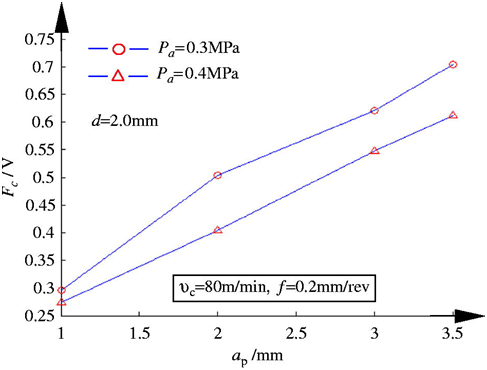Tool Geometry:
Back rake angle might vary over a wide range (namely, from + 20° to - 15°) and its value for a specified tool is decided based upon the kind of workpiece material being machined. This is observed that as the back rake angle enhance in the +ve direction the cutting force reduced but as the back rake angle reduced (below 0°) then the cutting force increases (Figure 7). In other terms, as the back rake angle reduced, the cutting force enhanced. But, as the back rake angle enhance (in +ve direction), the tool becomes weaker to withstand the forces. Therefore, it may not be enhanced beyond a certain value, else the tool becomes too weak to work like a cutting tool.

Figure 7 : Effect of Back Rake Angle on Cutting Force, Fc
Plan approach angle (φp in Figure 10, unit 7) and nose radius (r) jointly influence the cutting force acting upon the tool. In specific case of a tool with r = 2 mm, a minima is observed while in case of r = 0 mm the force Fc reduced with the enhance in plan approach angle, φp (Figure 8).
Influence of nose radius on Fc, Ff and Fd are illustrated in Figure 9. A enhance in tool nose radius enhance deformation and therefore larger force Fc. Force Fd is also enhanced however Ff is reduced.